Showing Spotlights 361 - 368 of 624 in category All (newest first):
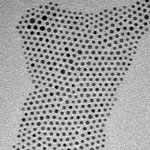 Their use in large-scale commercial applications requires cobalt nanoparticles with well-defined size and shape to be prepared in large quantities. Accurate tuning of the nanoparticle size and shape requires understanding of the mechanisms involved in particle nucleation and growth. In spite of extensive ongoing research, these mechanisms are still not fully understood owing to their complexity and interplay. Moreover, the current small-scale synthesis methods, such as the hot-injection method, can be difficult to scale to industrially relevant levels. In order to find more suitable methods for synthesizing cobalt nanoparticles, Finnish researchers revisited a widely studied hot-injection synthesis of monodisperse cobalt nanoparticles and show that the particle nucleation differs from what is expected for a hot-injection synthesis.
Their use in large-scale commercial applications requires cobalt nanoparticles with well-defined size and shape to be prepared in large quantities. Accurate tuning of the nanoparticle size and shape requires understanding of the mechanisms involved in particle nucleation and growth. In spite of extensive ongoing research, these mechanisms are still not fully understood owing to their complexity and interplay. Moreover, the current small-scale synthesis methods, such as the hot-injection method, can be difficult to scale to industrially relevant levels. In order to find more suitable methods for synthesizing cobalt nanoparticles, Finnish researchers revisited a widely studied hot-injection synthesis of monodisperse cobalt nanoparticles and show that the particle nucleation differs from what is expected for a hot-injection synthesis.
Feb 9th, 2011
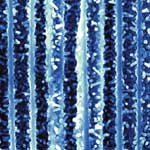 Nanotechnology-enabled fabrication of solar cells with conventional nanoparticle-based thin-films has a drawback in that the diffusion length of the charge carriers is too short to get charge separation, although the nanoparticles themselves provide copious surface areas; whereas photovoltaic devices fabricated by aligned or partially aligned nanowire array configurations have exhibited enhanced performance owing to improved carrier collection, reduced optical reflection, and efficient absorption. While the nanowire-based approach indeed increases the diffusion length of carriers it also reduces the available surface area. However, being able to fully capture the promising surface and transport properties of nanoscale materials in practical devices or systems relies on the capability of effectively translating the extraordinary characteristics of nanoparticles or nanowires into larger-scale, three-dimensional (3D) structures. Researchers now have come up with a promising approach to address this problem by growing uniformly distributed and high density nanorods into high-aspect ratio nanochannels.
Nanotechnology-enabled fabrication of solar cells with conventional nanoparticle-based thin-films has a drawback in that the diffusion length of the charge carriers is too short to get charge separation, although the nanoparticles themselves provide copious surface areas; whereas photovoltaic devices fabricated by aligned or partially aligned nanowire array configurations have exhibited enhanced performance owing to improved carrier collection, reduced optical reflection, and efficient absorption. While the nanowire-based approach indeed increases the diffusion length of carriers it also reduces the available surface area. However, being able to fully capture the promising surface and transport properties of nanoscale materials in practical devices or systems relies on the capability of effectively translating the extraordinary characteristics of nanoparticles or nanowires into larger-scale, three-dimensional (3D) structures. Researchers now have come up with a promising approach to address this problem by growing uniformly distributed and high density nanorods into high-aspect ratio nanochannels.
Feb 8th, 2011
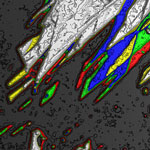 An important consideration for practical graphene applications is the fact that the physical characteristics of graphene are strongly dependent on the number of atomic planes, i.e. the properties of few-layer graphene are different from those of single layer graphene. Unfortunately, the one-atom thickness of graphene and its optical transparency make graphene identification and counting the number of atomic planes in few-layer graphene extremely challenging. This complicates the development of industrial-scale applications that would require the handling of large wafers with graphene. Current techniques for counting the number of atomic planes in few-layer graphene samples are either destructive, too complicated, or too slow. Researchers at UC Riverside have now developed a large-scale graphene recognition and quality control technique for industrial applications.
An important consideration for practical graphene applications is the fact that the physical characteristics of graphene are strongly dependent on the number of atomic planes, i.e. the properties of few-layer graphene are different from those of single layer graphene. Unfortunately, the one-atom thickness of graphene and its optical transparency make graphene identification and counting the number of atomic planes in few-layer graphene extremely challenging. This complicates the development of industrial-scale applications that would require the handling of large wafers with graphene. Current techniques for counting the number of atomic planes in few-layer graphene samples are either destructive, too complicated, or too slow. Researchers at UC Riverside have now developed a large-scale graphene recognition and quality control technique for industrial applications.
Feb 7th, 2011
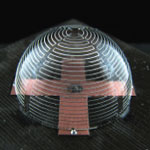 Electrically small antennas (ESA) find use in a wide variety of communications platforms - e.g. mobile phones an other handheld devices, RFID, aerospace and defense systems - but their construction requires advances in printing as well as a robust antenna design so that their operating frequency, size, and system impedance could be easily varied. Researchers have now demonstrated the conformal printing of electrically small antennas on spherical shapes with a key performance metric (radiation quality factor or Q) that very closely approaches the fundamental limit dictated by physics. This fundamental design approach enables specification of both operating frequency and size, while achieving near-optimal bandwidth at several frequencies of interest for wireless communications.
Electrically small antennas (ESA) find use in a wide variety of communications platforms - e.g. mobile phones an other handheld devices, RFID, aerospace and defense systems - but their construction requires advances in printing as well as a robust antenna design so that their operating frequency, size, and system impedance could be easily varied. Researchers have now demonstrated the conformal printing of electrically small antennas on spherical shapes with a key performance metric (radiation quality factor or Q) that very closely approaches the fundamental limit dictated by physics. This fundamental design approach enables specification of both operating frequency and size, while achieving near-optimal bandwidth at several frequencies of interest for wireless communications.
Feb 3rd, 2011
 Spinal cord injury in humans remains a devastating and incurable disorder. Rapid progress in tissue engineering, especially electrospinning techniques that lead to micro- and nanofibrous flexible tubular scaffolds for nerve cell regeneration, may lead to promising therapies for spinal cord injuries. have now demonstrated the repair of a chronically injured spinal cord by attempting to replace the fluid-filled cyst found in these lesions with a neuroprosthetics conducive to tissue reconstruction and axonal regeneration. They managed, for the first time, to obtain a consistent regeneration of the nervous tissue in chronicized injuries at the spinal cord by using a nanostructured composite scaffold with no cells in it.
Spinal cord injury in humans remains a devastating and incurable disorder. Rapid progress in tissue engineering, especially electrospinning techniques that lead to micro- and nanofibrous flexible tubular scaffolds for nerve cell regeneration, may lead to promising therapies for spinal cord injuries. have now demonstrated the repair of a chronically injured spinal cord by attempting to replace the fluid-filled cyst found in these lesions with a neuroprosthetics conducive to tissue reconstruction and axonal regeneration. They managed, for the first time, to obtain a consistent regeneration of the nervous tissue in chronicized injuries at the spinal cord by using a nanostructured composite scaffold with no cells in it.
Feb 2nd, 2011
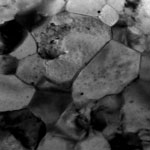 Thermoelectric materials therefore hold great promise for turning waste heat back into useful power and are touted for use in hybrid cars, new and efficient refrigerators, and other cooling or heating applications. Thermoelectric devices are energy converters - they are based on the fact that when certain materials are heated, they generate a significant electrical voltage; conversely, when a voltage is applied to them, they become hotter on one side, and colder on the other. But they have one big drawback: they are very inefficient. Efficient thermoelectric materials need to be very good at conducting electricity, but not heat - and that's the problem; these materials are not efficient enough to be practical. In most materials, electrical and thermal conductivity go hand in hand. So researchers have to find ways of boosting the performance of thermoelectric materials by separating the two properties.
Thermoelectric materials therefore hold great promise for turning waste heat back into useful power and are touted for use in hybrid cars, new and efficient refrigerators, and other cooling or heating applications. Thermoelectric devices are energy converters - they are based on the fact that when certain materials are heated, they generate a significant electrical voltage; conversely, when a voltage is applied to them, they become hotter on one side, and colder on the other. But they have one big drawback: they are very inefficient. Efficient thermoelectric materials need to be very good at conducting electricity, but not heat - and that's the problem; these materials are not efficient enough to be practical. In most materials, electrical and thermal conductivity go hand in hand. So researchers have to find ways of boosting the performance of thermoelectric materials by separating the two properties.
Jan 20th, 2011
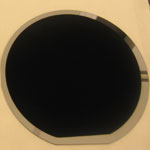 A key hurdle in realizing high-efficiency, cost-effective solar energy technology is the low efficiency of current power cells. In order to achieve maximum efficiency when converting solar power into electricity, ideally you need a solar panel that can absorb nearly every single photon of light - across the entire spectrum of sunlight and regardless of the sun's position in the sky. One way to achieve suppression of sunlight's reflection over a broad spectral range is by using nanotextured surfaces that form a graded transition of the refractive index from air to the substrate. Researchers in Finland have now demonstrated a scalable, high-throughput fabrication method for such non-reflecting nanostructured surfaces.
A key hurdle in realizing high-efficiency, cost-effective solar energy technology is the low efficiency of current power cells. In order to achieve maximum efficiency when converting solar power into electricity, ideally you need a solar panel that can absorb nearly every single photon of light - across the entire spectrum of sunlight and regardless of the sun's position in the sky. One way to achieve suppression of sunlight's reflection over a broad spectral range is by using nanotextured surfaces that form a graded transition of the refractive index from air to the substrate. Researchers in Finland have now demonstrated a scalable, high-throughput fabrication method for such non-reflecting nanostructured surfaces.
Jan 5th, 2011
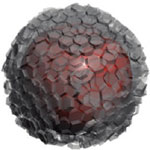 Graphene has attracted a huge amount of attention in recent years with its extraordinarily high electrical and thermal conductivities, mechanical, chemical properties, and large surface area. In order to meet the various demands for a variety of applications, preparation of desired structures of graphene sheets with controlled dimension and architecture are of significant importance. While research on flat graphene oxide structures has become quite common, there have been few reports on the preparation of hollow capsules of graphene through the nanosize, controlled assembly of graphene. Researchers in South Korea have now demonstrated the formation of graphene-based capsules through layer-by-layer (LbL) assembly of surface-functionalized reduced graphene oxide nanosheets of opposite charges onto polystyrene colloidal particles to produce multilayer thin films of graphene nanosheets.
Graphene has attracted a huge amount of attention in recent years with its extraordinarily high electrical and thermal conductivities, mechanical, chemical properties, and large surface area. In order to meet the various demands for a variety of applications, preparation of desired structures of graphene sheets with controlled dimension and architecture are of significant importance. While research on flat graphene oxide structures has become quite common, there have been few reports on the preparation of hollow capsules of graphene through the nanosize, controlled assembly of graphene. Researchers in South Korea have now demonstrated the formation of graphene-based capsules through layer-by-layer (LbL) assembly of surface-functionalized reduced graphene oxide nanosheets of opposite charges onto polystyrene colloidal particles to produce multilayer thin films of graphene nanosheets.
Dec 14th, 2010
 Their use in large-scale commercial applications requires cobalt nanoparticles with well-defined size and shape to be prepared in large quantities. Accurate tuning of the nanoparticle size and shape requires understanding of the mechanisms involved in particle nucleation and growth. In spite of extensive ongoing research, these mechanisms are still not fully understood owing to their complexity and interplay. Moreover, the current small-scale synthesis methods, such as the hot-injection method, can be difficult to scale to industrially relevant levels. In order to find more suitable methods for synthesizing cobalt nanoparticles, Finnish researchers revisited a widely studied hot-injection synthesis of monodisperse cobalt nanoparticles and show that the particle nucleation differs from what is expected for a hot-injection synthesis.
Their use in large-scale commercial applications requires cobalt nanoparticles with well-defined size and shape to be prepared in large quantities. Accurate tuning of the nanoparticle size and shape requires understanding of the mechanisms involved in particle nucleation and growth. In spite of extensive ongoing research, these mechanisms are still not fully understood owing to their complexity and interplay. Moreover, the current small-scale synthesis methods, such as the hot-injection method, can be difficult to scale to industrially relevant levels. In order to find more suitable methods for synthesizing cobalt nanoparticles, Finnish researchers revisited a widely studied hot-injection synthesis of monodisperse cobalt nanoparticles and show that the particle nucleation differs from what is expected for a hot-injection synthesis.
 Subscribe to our Nanotechnology Spotlight feed
Subscribe to our Nanotechnology Spotlight feed





